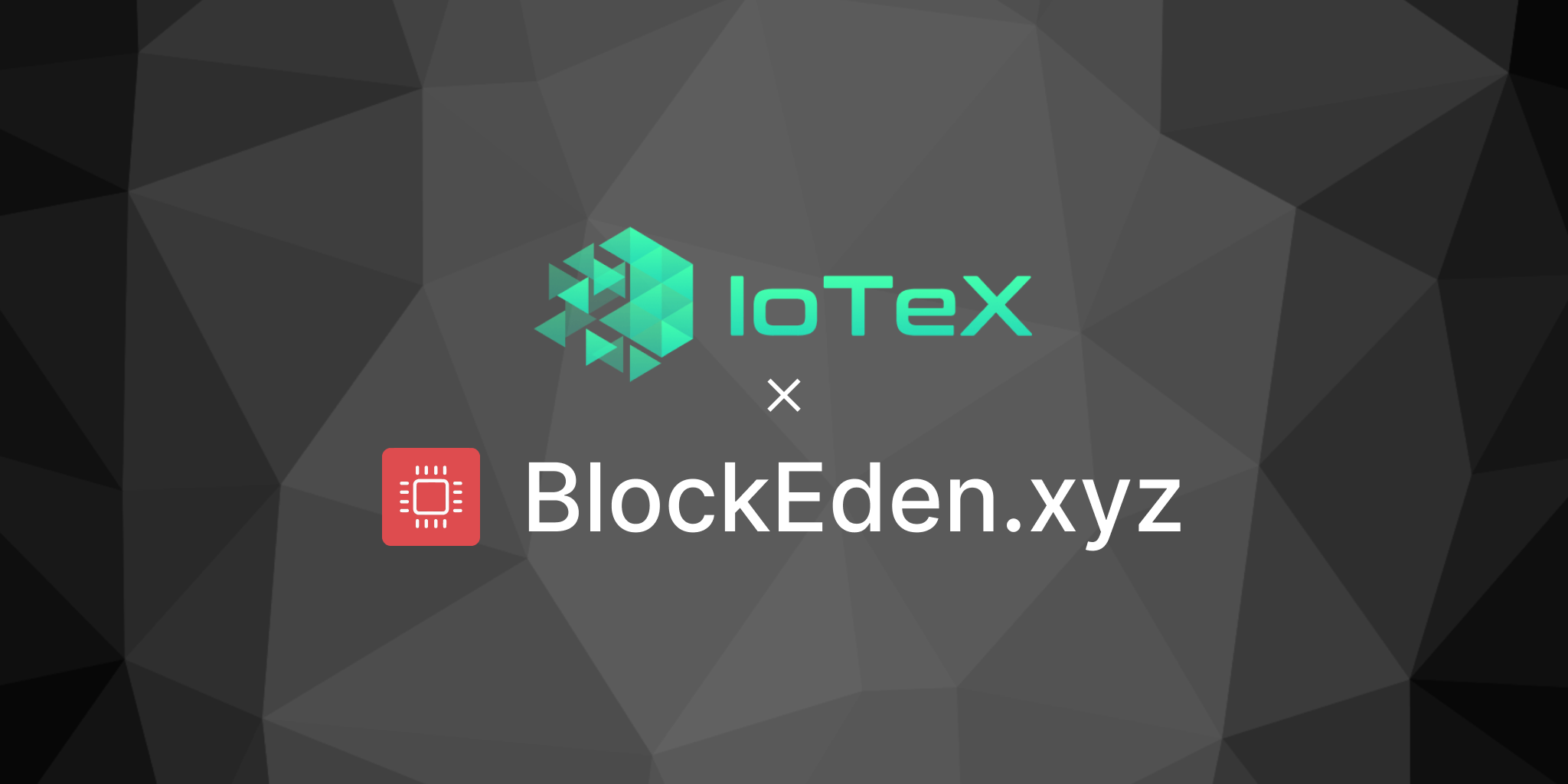IoTeX 2.0: Capacitando DePIN para Todos
A rede de infraestrutura física descentralizada (DePIN) está surgindo como uma força transformadora no ecossistema Web3, oferecendo um novo paradigma para construir, operar e gerenciar redes de infraestrutura física. No entanto, muitas startups de DePIN enfrentam desafios significativos devido à falta de fundos e competência técnica. O IoTeX 2.0 tem como objetivo abordar esses desafios com um conjunto de inovações projetadas para apoiar a comunidade DePIN na realização da visão de “DePIN para Todos!”.

Inovações Principais do IoTeX 2.0
-
Design Tokenômico:
- Uma utilidade abrangente para os tokens IOTX dentro da infraestrutura modular DePIN.
- Recompensas de staking inflacionárias, mecanismos de queima deflacionários e incentivos de crescimento para manter um suprimento de tokens equilibrado.
-
Infraestrutura Modular DePIN:
- Modular Security Pool (MSP): fornece uma camada confiável unificada para os módulos de infraestrutura DePIN por meio de restaking.
- W3bstream: uma rede descentralizada de multi‑provers para verificação DePIN, suportando diversas abordagens de prova de validade.
- ioID: um sistema de identidade unificado que gerencia e protege relações máquina‑para‑máquina e máquina‑para‑pessoa.
- ioConnect: um SDK embutido universal que capacita a abstração de dispositivos e facilita a interação com dispositivos inteligentes.
- ioDDK: um SDK de cadeia que permite que projetos DePIN provisionem cadeias de aplicação soberanas, herdando a segurança da L1 da IoTeX.
-
Bens Públicos:
- Ferramentas como DePINScan e DePIN Liquidity Hub para apoiar a conscientização, usabilidade e liquidez dos projetos DePIN.
A Importância do DePIN
O DePIN busca disruptar indústrias tradicionais e serviços públicos, que frequentemente são monopólios controlados por corporações centralizadas e governos. Ao alavancar a tecnologia blockchain, o DePIN pode trazer transparência, confiança e inovação para infraestruturas físicas e serviços públicos. Esse novo modelo permite que as pessoas contribuam e construam patrimônio em redes de infraestrutura do mundo real, superando barreiras financeiras e logísticas de entrada.
O Cenário DePIN
O DePIN é um esforço coletivo de inúmeros projetos ao redor do globo, focados em descentralizar e melhorar a infraestrutura física. O setor DePIN inclui:
- Redes de Recursos Físicos: produzem recursos não fungíveis que dependem de hardware localizado.
- Redes de Recursos Digitais: criam marketplaces para recursos fungíveis, baseados em hardware independente de localização.
- Infraestrutura e Ferramentas: facilitam o crescimento e fornecem capacidades prontas para aplicações DePIN.
Pilha Tecnológica DePIN e Seus Desafios
A pilha tecnológica DePIN requer uma arquitetura de ponta a ponta que conecte o mundo real à blockchain. Isso inclui camadas como abstração de hardware, conectividade, sequenciador, disponibilidade de dados, armazenamento de longo prazo, computação off‑chain, blockchain, identidade e governança. Desenvolver essa pilha complexa apresenta altas barreiras de entrada, especialmente para mercados emergentes.
IoTeX 2.0: Uma Abordagem Modular
O IoTeX 2.0 introduz uma infraestrutura modular, permitindo que projetos DePIN construam uma pilha tecnológica que atenda às suas necessidades específicas. Essa abordagem apoia tanto equipes grandes quanto pequenas, oferecendo soluções abrangentes e construídas sob medida. Componentes chave incluem:
- Modular Security Pool (MSP): garante confiança unificada e de ponta a ponta em todos os DIMs, alavancando ativos em stake de blockchains bem estabelecidas.
- W3bstream: facilita a computação descentralizada off‑chain com múltiplos provedores, aumentando a escalabilidade e eficiência das aplicações DePIN.
- ioID e ioConnect: simplificam, respectivamente, a gestão de identidade e a abstração de hardware, permitindo integração fluida de dispositivos inteligentes em projetos DePIN.
- ioDDK: suporta o lançamento de blockchains L2 soberanas, ampliando as capacidades dos projetos DePIN.
Perspectivas Futuras
O IoTeX 2.0 pretende criar um novo mundo onde redes de infraestrutura física sejam descentralizadas, transparentes e equitativas. Ao aproveitar tecnologias de ponta como provas de conhecimento zero, IA e blockchain, o IoTeX 2.0 visualiza um futuro em que dispositivos inteligentes, sistemas autônomos e marketplaces de recursos digitais operem de forma harmoniosa e segura. Essa visão capacita pessoas comuns a contribuir e se beneficiar da modernização da infraestrutura global, garantindo “DePIN para Todos!”.
Resumo
O IoTeX 2.0 representa um marco significativo na evolução da rede IoTeX, abordando os desafios enfrentados por startups DePIN e impulsionando a próxima fase de crescimento das redes de infraestrutura física descentralizadas. Com sua infraestrutura modular inovadora, tokenomics abrangente e compromisso com bens públicos, o IoTeX 2.0 está posicionado para liderar o movimento DePIN e capacitar construtores em todo o mundo. Você é desenvolvedor IoTeX? O BlockEden.xyz oferece RPC IoTeX em https://blockeden.xyz/api-marketplace/iotex.


